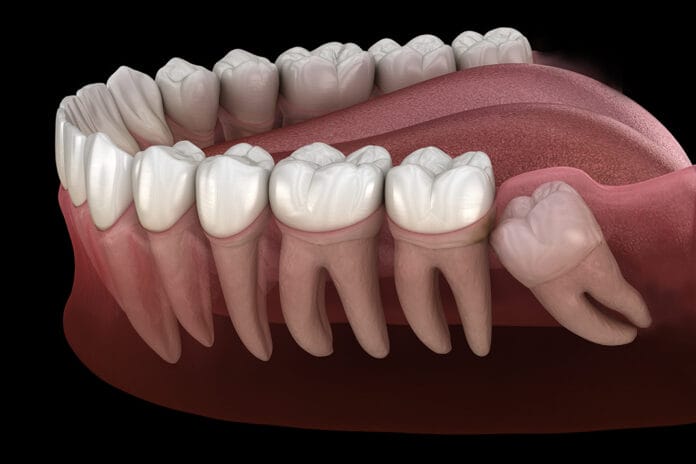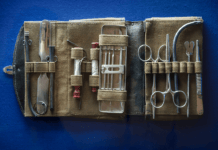Many of us remember what it was like to get our third molars extracted. Was it a simple extraction or surgical extraction? Had they erupted fully, or impacted causing havoc and pushing against other teeth, threatening thousands of dollars in orthodontic care?
Did you receive sedation anesthesia or general anesthesia and then recorded by your mother on her phone while the anesthesia made you act loopy? (Did the video find its way onto the internet to the joy of your friends and family alike?)
We tell our patients not to drink from a straw or do anything after surgery that will dislodge the blood clots that help aid healing. We warn them about the dreadful pain that comes from dry-socket, and it is dreadful pain, but sometimes they don’t listen.
We get their emotional phone calls two days later about their pain levels, and they need help. We are always trying to lessen our patients’ pain while giving them the best care. When it comes to extracting a molar, what can we do better to benefit our patients, especially when they may not listen to aftercare instructions?
Comparison of Efficacy of Ozonated Water, Normal Saline, and Povidone-iodine after Surgical Removal of Impacted Mandibular Third Molars: A Cross-sectional Study was created to observe three ways to relieve some of this pain in our patients and, hopefully, find the most effective way out of the three, to do so.
Saline
Saline, or sodium-chloride and water, is used most during these surgeries all over first-world countries. It is mostly efficient but lacking in properties that could greatly benefit our patients.
Normal saline does not kill all the most invasive germs that can invade at such a sensitive time, but it can promote healing. It is widely used as an irrigant and does its job well, as long as an irrigant is all that you need.
Basically, saline does the job, but is there a better option?
Povidone-iodine
Povidone-iodine is a potent antiseptic that is a mixture of iodine molecules and polyvinyl-pyrrolidone that interferes with hydrogen bond formation. This solution does kill pathogens but does not promote healing, which is part of the problem researchers are trying to solve. Like chlorhexidine gluconate, povidone-iodine inhibits fibroblasts’ proliferation and attachment; this is what inhibits healing. Another side effect of povidone-iodine is skin irritation, and it can be very corrosive.
This research showed povidone-iodine did help reduce post-op infections but was statistically inferior to ozonated water.
Ozonated Water
Ozonated water is antimicrobial and promotes healing. Ozonated gas is combined with a remineralizing solution and used as an immunostimulatory agent that kills all damaging pathogens while having a positive effect on bone metabolization.
Ozonated water may reduce late-onset infections that occur a month or so after the surgery. In fact, the study covered several hundred procedures, and not a single person who was treated with the ozonated water endured a post-op infection.
Conclusions
Compared to saline and povidone-iodine, the ozonated water solution was statistically more effective at reducing alveolar osteitis and pain, mostly due to the oxygen atoms that promote healing.
The problem with post-operative care is that we must trust that our patients are following the care instructions we give them. We have learned that, with some patients, this is wishful thinking. The best path we can take is to make sure we decrease their pain as much as possible before sending them home. According to researchers, irrigating sockets with ozonated water may help and is superior to saline and povidone-iodine.











